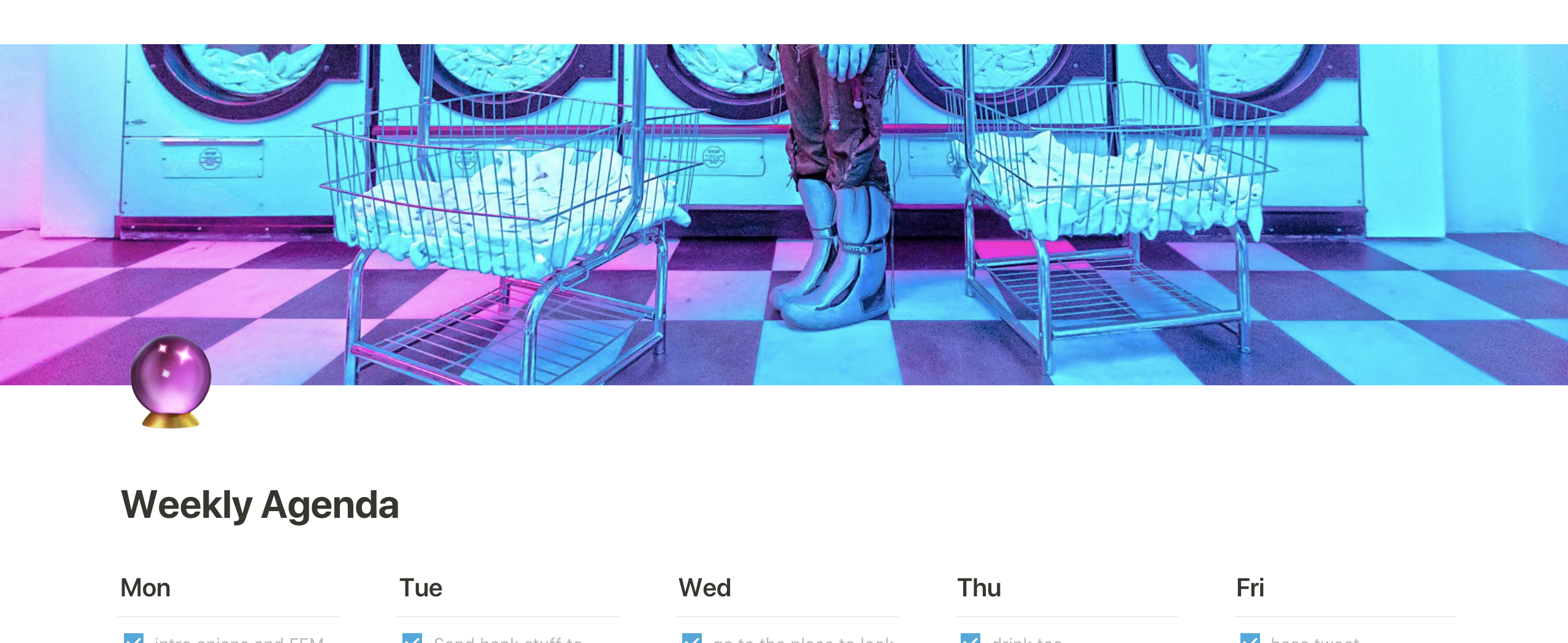Prioritizing
You’re faced with a lot of decisions in everyday work. There are multiple tasks calling for your focus, and you can burn daylight or even burn out trying to decide what comes first. There’s a phenomenon called decision fatigue. There have been many studies that you can make poor choices when you’re not able to decide what is most important that can lead to things like impaired judgement and even purchase decisions.
So how can you figure out what’s most important to work on first, or even what tasks to work on at all? In this post, we’ll explore how to sift through the inevitable weight of our to-do lists so that we can be efficient and clear with our direction.
If you feel like your to-do list is ruling you instead of you ruling it, read on.
How to invest your time
If you’re going to think smarter (and not harder) about how you prioritize tasks, you have to invest a little time away from your to-do list. Here’s the thing: what you work on informs your values. You may think it’s no big thing to work overtime for a little while, but something will be sacrificed with this decision. If you’re a parent, you might spend less time with your kids. Maybe it’s less time hanging out with friends. Maybe you give up sleep or eating well.
Similarly, if you choose not to work much or effectively, you’re deciding that your values lie outside your career, which is ok too. No judgement here. But where you invest your time is not just about what you value, but also what you don’t value.
Every quarter or so, I break down all the tasks I’ve committed doing. I write them all down, and I create four quadrants containing all of things I care about. This could be: helps the community, helps one-to-one relationships (which can include coworkers, friends, and family), makes money, and things I find personally fulfilling. This is just an example and your quadrants may be different, of course.
I then take all the things I have going and place them in the quadrants. I see how many of the boxes each one takes up. Some endeavors are counted in a quadrant twice to add weight to it.
Here are a couple allotments for me:
- Writing things on CSS-Tricks (like this very article) is one of the rarest instances where all boxes are checked
- Mentoring people checks: building one-to-one relationships, and something that I find personally fulfilling
Anything that fills just one box has to be reconsidered. Anything that fills nothing is usually on the chopping block. This activity allows me to see where I really want to invest my energy. It’s actually illuminating because sometimes I don’t really know what I value and how to prioritize tasks around those things until I do the exercise.
From here, the rest of the prioritization gets a little easier. I now have a better idea where my efforts are really paying off. I also know when I’m wasting my own time. This distinction helps me prevent decision fatigue quite a bit because I have a guiding light to help make choices.
What do you have to do?
In order to figure out a plan for yourself, the first thing you should be doing is gathering all of your tasks, large and small. Letting those things fester in our minds can make us feel burdened by what we have to do, so get it all out on proverbial paper. You can use notebooks, a homemade to-do list, applications like Notion, Evernote, or Clear. It’s up to you.
I use several lists for a few reasons: I tend to retain information better if I write it down multiple in multiple places. For example, I need some things on mobile. I use Clear for those things, Notion on desktop, and a paper teacher planner (which I’ve shared before). I find that the repetition helps me solidify what’s important. That might not be right for you. That’s cool, do what works.
Coding priorities
You may work at a company that creates tickets for tasks. Some tickets are simple and you can knock them out quickly; some can be arduous. Whenever I have a larger coding task, I first break it down into a to-do list as comments in my code. It looks vaguely like this:
// get the request from the server
// give us an error if it failed
// do x thing with that request
// format the data like soThat way, I can fill in the blanks with each task. I usually try to split each one into different pull requests so I can keep myself organized and make it easier on my reviewers. When it’s all done, I’ll go back and prune the comments or replace them with comments that explain the why (not how).
Overall prioritization
There are some tasks that are pretty straightforward. You need to do the thing. It’s indisputable. Other people are counting on you or your future self will depend on it somehow. These are actually easier to prioritize.
First I break down large tasks into smaller pieces. That helps me put things in order:
- Things that are actively on fire or are time-sensitive
- Things that can be done quickly
- Things that need a scheduled block of time
- Things that I may get to further along
Part of the reason we do the small things first is that morale is important. I feel more incensed to get my other work done because being productive feels good — there’s a small dopamine rush associated with every check. This is also why I put things I’ve already accomplished on my list. It may sound silly, but acknowledging accomplishments makes me more likely to keep going and pushes me through the more complicated tasks.
Some people, like Alice Goldfuss, have this down to a science:
I have a kanban board for my personal life todo list and a cron job that empties my Done column and texts it to me every week, so I feel accomplished
— bletchley punk (@alicegoldfuss) May 25, 2019
Keep yourself motivated
Keeping yourself motivated is key. Sometimes this means keeping your own morale in mind. The good news is you know yourself pretty well. Here are some tricks that have served me well:
- Put things on your to do list that you enjoy. You will start to associate your to do list with happiness. For instance, recently I put “read a dumb thriller fiction” on my to do list. It’s ridiculous, but it works. It also helps me remember to do things outside of code all day.
- Put things on your to do list that you’ve already done. When you mark them off you can get a sense of satisfaction that may entice you to gather more things you can check off. I think a lot of people do this. I definitely didn’t come up with it.
- Customize it a bit. Whether I use paper or digital means, I spend a minute or two customizing it and making it my own. It makes it more important to me, because I’ve invested in it, and I’m more likely to keep up with the contents.
Prioritizing based on energy levels
Chris Coyier mentioned a great blog post by Alex Sexton when I was pondering how I feel better suited for things like meetings on some days and heads-down coding on others.
I think this is brilliant! I’ve definitely had times in my career where I’ve suffered because of sporadic meetings with ill-defined amounts of time in between that were too small to be heads-down coding, and I would make up for it at night. That’s not a recipe for success; it’s a recipe for fatigue.

Lately, I’ve been working on grouping similar tasks. For example, meetings should all happen in succession because it’s easier for me to jump from one to another than it is having an hour in between. I’m also more keen to communicate with others on Monday, when I’m getting the lay of the land. Towards the end of the week, my energy is higher if I’m dedicated to coding, especially if I’ve allotted uninterrupted time.
Notice when your energy levels are high and when they wane. Notice when you’re more productive for social activities and when you’re better off working in isolation. The more you study yourself, the easier planning becomes.
Scheduling
Now that you have your priorities in order, go ahead and schedule your time. I like to use the weekly planner in Notion. I’ll take all the things I think I can get done in a week and break them down day-by-day, based on when it makes the most sense to do each task. When I finish a task, it’s dragged to the top. Anything that’s unchecked at the bottom by the end of the day moves over to the next. I also have general to-do lists, and task-based lists, but the weekly planner is my holy grail. Again, you don’t have to do it exactly like I do, find what works for you.

Know yourself
Most of these systems work for me because I know my strengths and weaknesses and I play to them: I work more efficiently when things are broken down into steps. I work best when my work has the most meaning, and I remove the cruft. I work best when I work along with, not against, my energy levels, where possible.
There’s one more thing I haven’t addressed yet: forgiveness. You’ll be more productive on some days (or hell, even years!) than you will be on others, and that’s OK. Life is full of ebbs and flows.
It’s good to check in to see if your waning productivity is the result of simply moving a little slower, signals signs of depression, represents misalignment with personal goals (or the company where you work), or if you’re reacting to a toxic environment.
In all cases, forgiveness is in order. In some cases, you may need more than a prioritization plan. But truly, you’ll never be able to do everything, because no one is capable of that. People you see on social media might also only be showing their successes, and conveniently leaving out their failures and struggles. The fact is that we all get distraught, and sometimes mental illness isn’t something we want to announce over the megaphone of social media. Try not to compare yourself to others. Forgive yourself a bit. Work an amount that’s reasonable for you.
Hopefully, if you’re prioritizing well, the amount of time that you do have to work is structured in a way that actually relieves stress and allows you to accomplish the most you can, when you can. The goal of prioritizing is to bring into focus the work that you find fulfilling, and removes tasks that don’t. That’s the sweet spot.
The post Prioritizing appeared first on CSS-Tricks.
